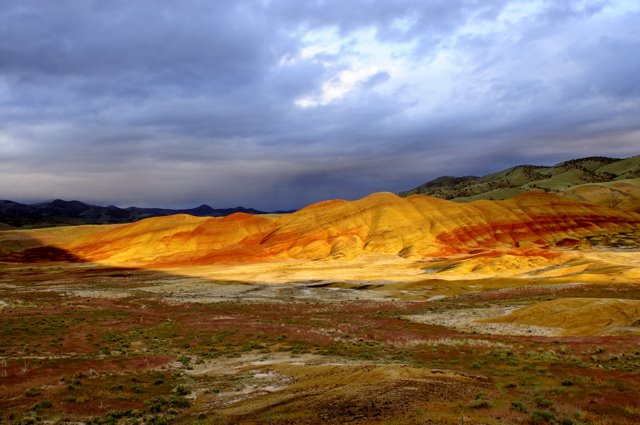We had a family reunion this past weekend and as usual we finally got around to shooting group pictures of all the families that attended. Fortunately I was able to prevent what would have been a disaster. The day was a bright sunny one with harsh light and deep shadows. The place where we held the reunion has lots of trees and shady spots and I encouraged everyone to set up in one of those with a large tree as a backdrop. I worked out great. The family popirazzi got all their pictures without people squinting into the sun.
This is important to remember. Don't shoot portraits in direct sunlight if you can do it in the shade. People won't be squinting and colors and light areas won't be blown out. Remember to use the appropriate white balance too. Pose everyone as you wish but watch for bright spots where the sun breaks through the trees or branches. Don't allow these bright spots to land where they shouldn't. They will attract the eye and may cause distraction from you theme or main subject.
Go to my website at http://dwainspix.com to see samples of my work .
Monday, July 20, 2009
Family Portraits Outdoors on a Sunny Day
Subscribe to:
Post Comments (Atom)
Photography Tips
Here are a few things you can do to improve your photography that will apply regardless of what camera you use. These are the basics that every photographer should know and do to get reasonably good pictures out of any camera.
Make sure you have a clean lens. Don't just blow the dust off, but use a clean cloth suitable for cleaning lenses and do it right.
Set up so your camera is stable and won't move as you press the shutter. You can do this a number of ways. If you will be handholding the camera, hold your elbows in against your sides, and stand with your feet apart with one slightly forward of the other. You can also lean against a solid object like a light pole, tree, building or whatever. The best method though is to use a tripod or monopod. I have both but I like to carry the tripod best. If I want to use it as a monopod I just extend only one leg and us it as I would a monopod. I'll add instructions about to how to use these tools later.
Finally the "First" basic thing you need to do is read your manual and learn what all the parts of your camera are for and how to use them. If you understand how your meter works and what white balence is you'll go a long way to getting that shot you want when the light is wierd and you are wondering why your pictures are all dark or yellow instead of like what you saw on the monitor or in the viewfinder.
I'll expand on all these topics in the coming weeks and months so you'll want to check back and see what I've added from time to time.
Make sure you have a clean lens. Don't just blow the dust off, but use a clean cloth suitable for cleaning lenses and do it right.
Set up so your camera is stable and won't move as you press the shutter. You can do this a number of ways. If you will be handholding the camera, hold your elbows in against your sides, and stand with your feet apart with one slightly forward of the other. You can also lean against a solid object like a light pole, tree, building or whatever. The best method though is to use a tripod or monopod. I have both but I like to carry the tripod best. If I want to use it as a monopod I just extend only one leg and us it as I would a monopod. I'll add instructions about to how to use these tools later.
Finally the "First" basic thing you need to do is read your manual and learn what all the parts of your camera are for and how to use them. If you understand how your meter works and what white balence is you'll go a long way to getting that shot you want when the light is wierd and you are wondering why your pictures are all dark or yellow instead of like what you saw on the monitor or in the viewfinder.
I'll expand on all these topics in the coming weeks and months so you'll want to check back and see what I've added from time to time.

No comments:
Post a Comment